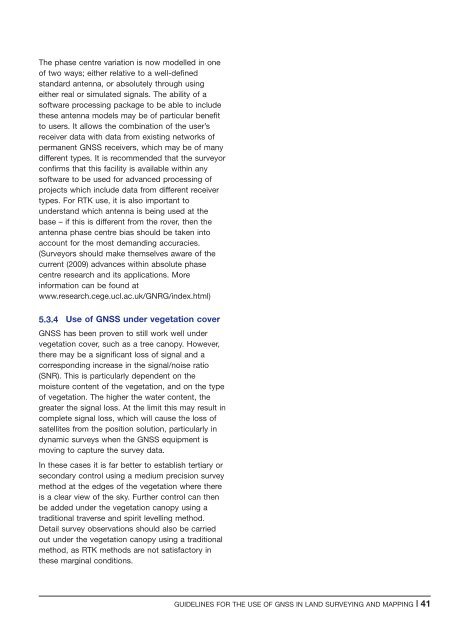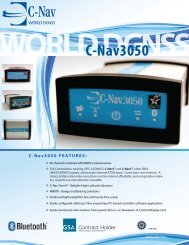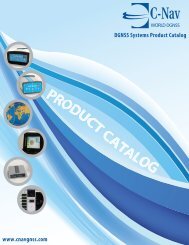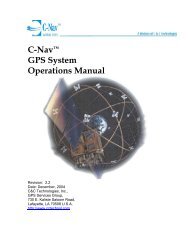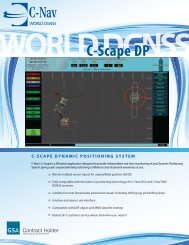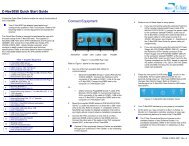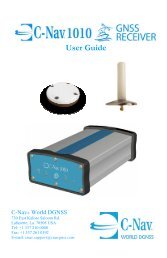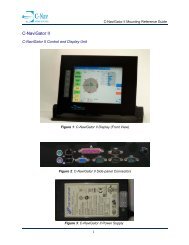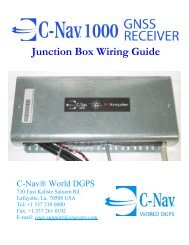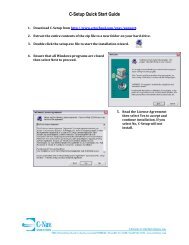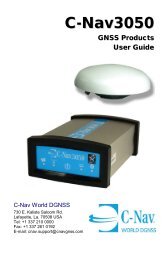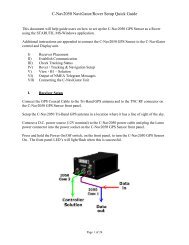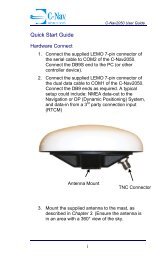Guidelines for the use of GNSS in surveying and mapping
Guidelines for the use of GNSS in surveying and mapping
Guidelines for the use of GNSS in surveying and mapping
You also want an ePaper? Increase the reach of your titles
YUMPU automatically turns print PDFs into web optimized ePapers that Google loves.
The phase centre variation is now modelled <strong>in</strong> one<br />
<strong>of</strong> two ways; ei<strong>the</strong>r relative to a well-def<strong>in</strong>ed<br />
st<strong>and</strong>ard antenna, or absolutely through us<strong>in</strong>g<br />
ei<strong>the</strong>r real or simulated signals. The ability <strong>of</strong> a<br />
s<strong>of</strong>tware process<strong>in</strong>g package to be able to <strong>in</strong>clude<br />
<strong>the</strong>se antenna models may be <strong>of</strong> particular benefit<br />
to <strong>use</strong>rs. It allows <strong>the</strong> comb<strong>in</strong>ation <strong>of</strong> <strong>the</strong> <strong>use</strong>r’s<br />
receiver data with data from exist<strong>in</strong>g networks <strong>of</strong><br />
permanent <strong>GNSS</strong> receivers, which may be <strong>of</strong> many<br />
different types. It is recommended that <strong>the</strong> surveyor<br />
confirms that this facility is available with<strong>in</strong> any<br />
s<strong>of</strong>tware to be <strong>use</strong>d <strong>for</strong> advanced process<strong>in</strong>g <strong>of</strong><br />
projects which <strong>in</strong>clude data from different receiver<br />
types. For RTK <strong>use</strong>, it is also important to<br />
underst<strong>and</strong> which antenna is be<strong>in</strong>g <strong>use</strong>d at <strong>the</strong><br />
base – if this is different from <strong>the</strong> rover, <strong>the</strong>n <strong>the</strong><br />
antenna phase centre bias should be taken <strong>in</strong>to<br />
account <strong>for</strong> <strong>the</strong> most dem<strong>and</strong><strong>in</strong>g accuracies.<br />
(Surveyors should make <strong>the</strong>mselves aware <strong>of</strong> <strong>the</strong><br />
current (2009) advances with<strong>in</strong> absolute phase<br />
centre research <strong>and</strong> its applications. More<br />
<strong>in</strong><strong>for</strong>mation can be found at<br />
www.research.cege.ucl.ac.uk/GNRG/<strong>in</strong>dex.html)<br />
5.3.4 Use <strong>of</strong> <strong>GNSS</strong> under vegetation cover<br />
<strong>GNSS</strong> has been proven to still work well under<br />
vegetation cover, such as a tree canopy. However,<br />
<strong>the</strong>re may be a significant loss <strong>of</strong> signal <strong>and</strong> a<br />
correspond<strong>in</strong>g <strong>in</strong>crease <strong>in</strong> <strong>the</strong> signal/noise ratio<br />
(SNR). This is particularly dependent on <strong>the</strong><br />
moisture content <strong>of</strong> <strong>the</strong> vegetation, <strong>and</strong> on <strong>the</strong> type<br />
<strong>of</strong> vegetation. The higher <strong>the</strong> water content, <strong>the</strong><br />
greater <strong>the</strong> signal loss. At <strong>the</strong> limit this may result <strong>in</strong><br />
complete signal loss, which will ca<strong>use</strong> <strong>the</strong> loss <strong>of</strong><br />
satellites from <strong>the</strong> position solution, particularly <strong>in</strong><br />
dynamic surveys when <strong>the</strong> <strong>GNSS</strong> equipment is<br />
mov<strong>in</strong>g to capture <strong>the</strong> survey data.<br />
In <strong>the</strong>se cases it is far better to establish tertiary or<br />
secondary control us<strong>in</strong>g a medium precision survey<br />
method at <strong>the</strong> edges <strong>of</strong> <strong>the</strong> vegetation where <strong>the</strong>re<br />
is a clear view <strong>of</strong> <strong>the</strong> sky. Fur<strong>the</strong>r control can <strong>the</strong>n<br />
be added under <strong>the</strong> vegetation canopy us<strong>in</strong>g a<br />
traditional traverse <strong>and</strong> spirit levell<strong>in</strong>g method.<br />
Detail survey observations should also be carried<br />
out under <strong>the</strong> vegetation canopy us<strong>in</strong>g a traditional<br />
method, as RTK methods are not satisfactory <strong>in</strong><br />
<strong>the</strong>se marg<strong>in</strong>al conditions.<br />
GUIDELINES FOR THE USE OF <strong>GNSS</strong> IN LAND SURVEYING AND MAPPING |41


